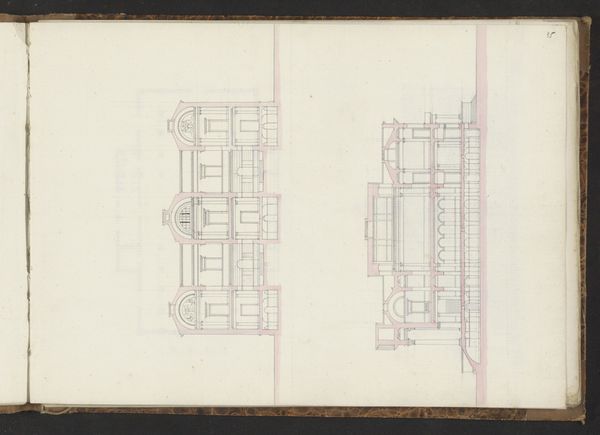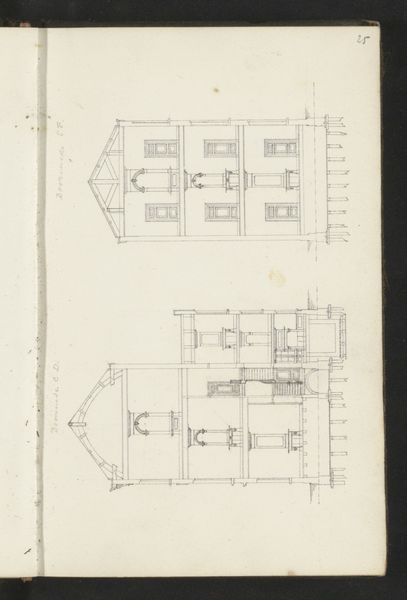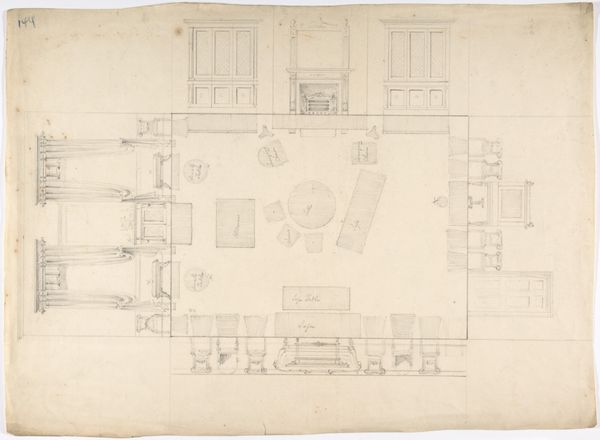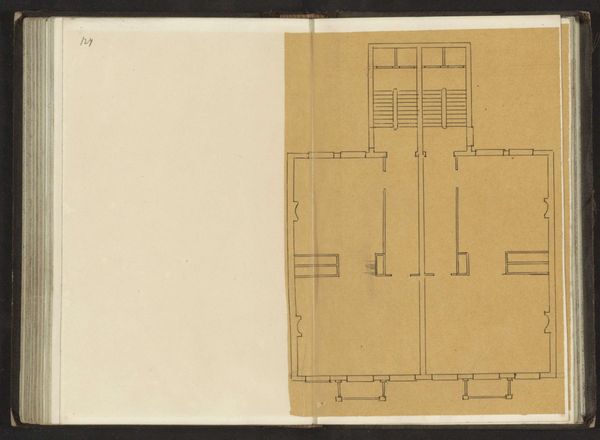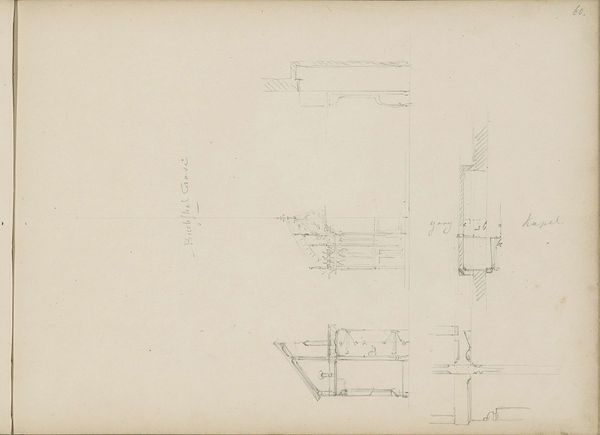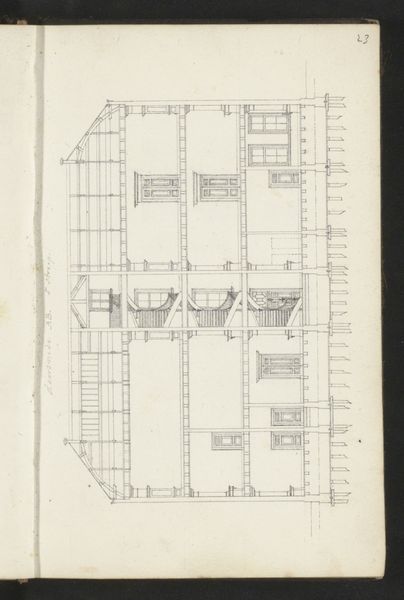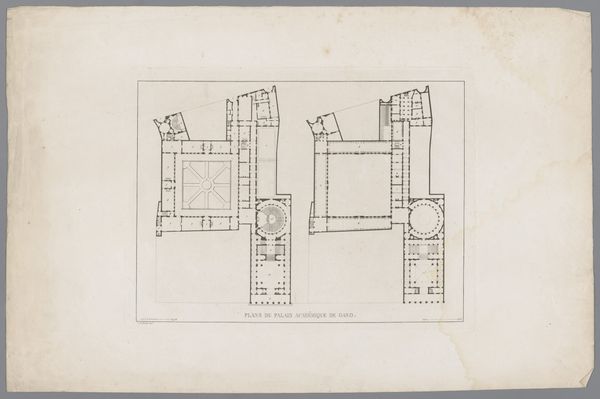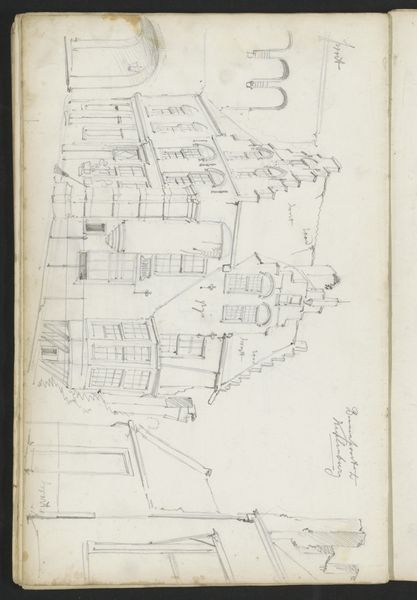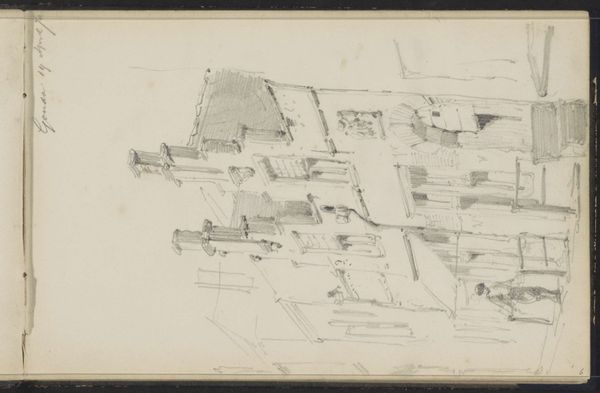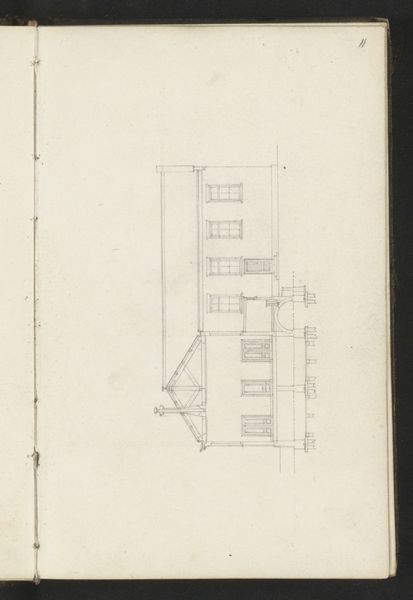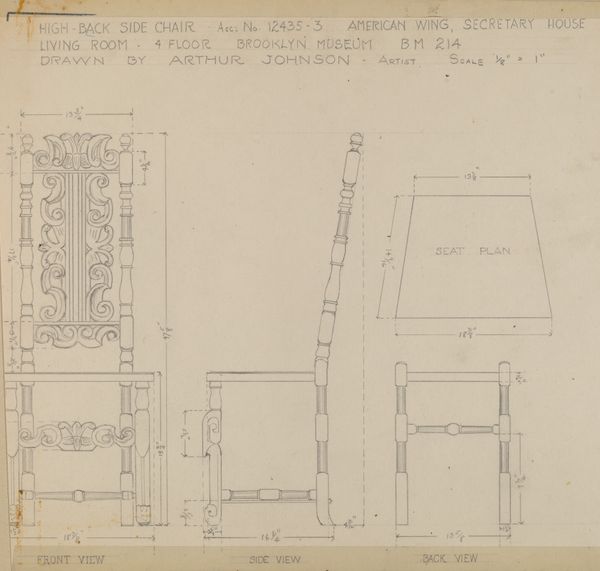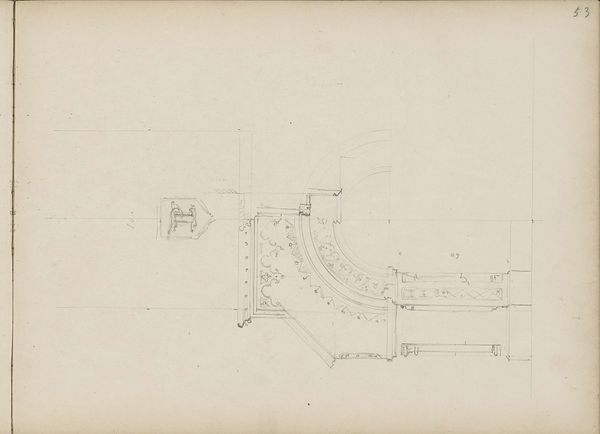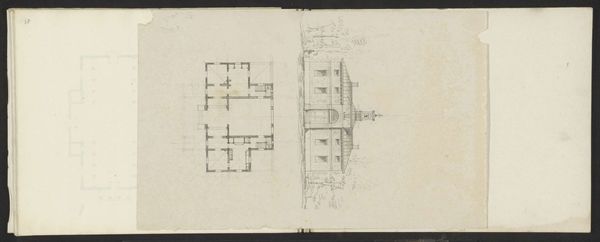
drawing, pencil, pen, architecture
#
drawing
#
aged paper
#
toned paper
#
quirky sketch
#
dutch-golden-age
#
sketch book
#
incomplete sketchy
#
hand drawn type
#
personal sketchbook
#
pencil
#
pen and pencil
#
sketchbook drawing
#
pen
#
cityscape
#
sketchbook art
#
architecture
#
building
Copyright: Rijks Museum: Open Domain
Curator: Here we have Cornelis Springer's "Gevels van Keizersgracht 133, 141 en 143," a cityscape study rendered circa 1846-1882 in pen and pencil. Editor: It's skeletal. All meticulous outlines but little substance, like an architect’s dream yet to be fleshed out by real life. Curator: These facades on the Keizersgracht, though rendered as an exercise, are also cultural symbols. Their careful rendering speaks to the values placed on architecture during the Dutch Golden Age—a visible manifestation of prosperity, civic pride and enduring values. Editor: Absolutely, the structural repetition—those neat rows of windows—echoes a kind of bourgeois striving for order and control. See how he marks and emphasizes different lines in different structures, inviting close comparison through material differences. Curator: Note also that, even within such rigid architectural structures, the artist includes minute individual flourishes on these structures, the cartouches above doorways. I wonder what stories might they suggest about their individual residents or civic identity? Editor: You see that incompleteness of one, the barest indication of fenestration, gives an insight into his method and suggests that Springer wanted us to understand it as more than a perfect mirror of urban regularity. The unfinished facade, then, serves as a reminder of the artist's deliberate, interpretive hand. Curator: I’m struck by the way Springer transforms mundane reality through detailed observation into symbolic architectural structures that carry so much cultural weight for the Netherlands. Editor: And for me, it's precisely the artist's calculated and selective omissions and elaborations in his technique, laying bare both the structure of the building and the structure of representation itself, that invites close contemplation.
Comments
No comments
Be the first to comment and join the conversation on the ultimate creative platform.
